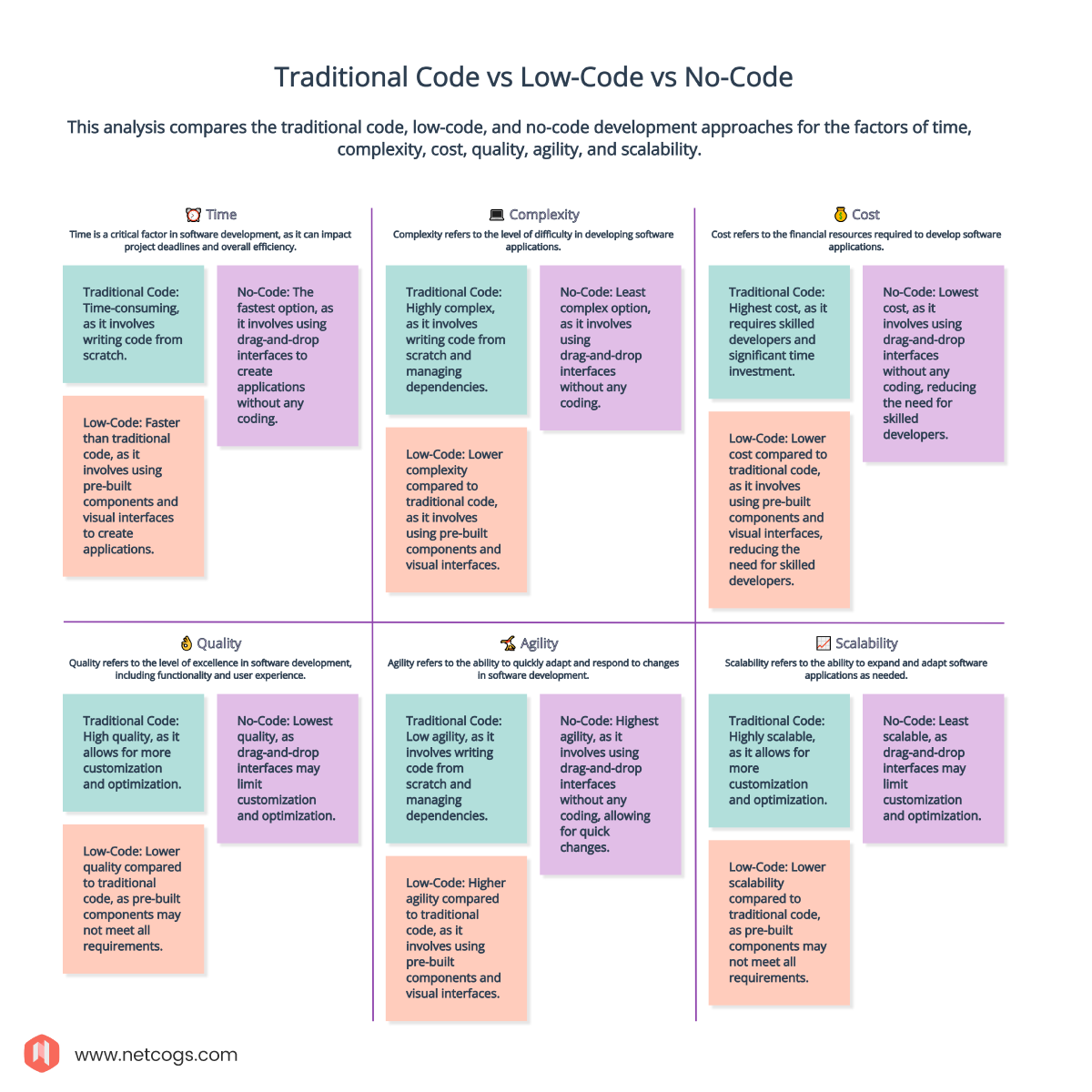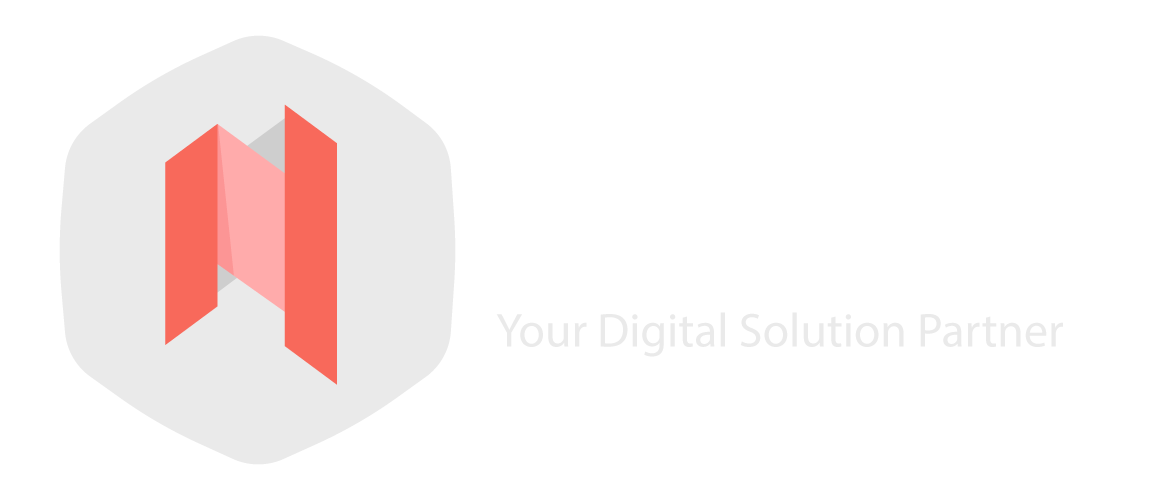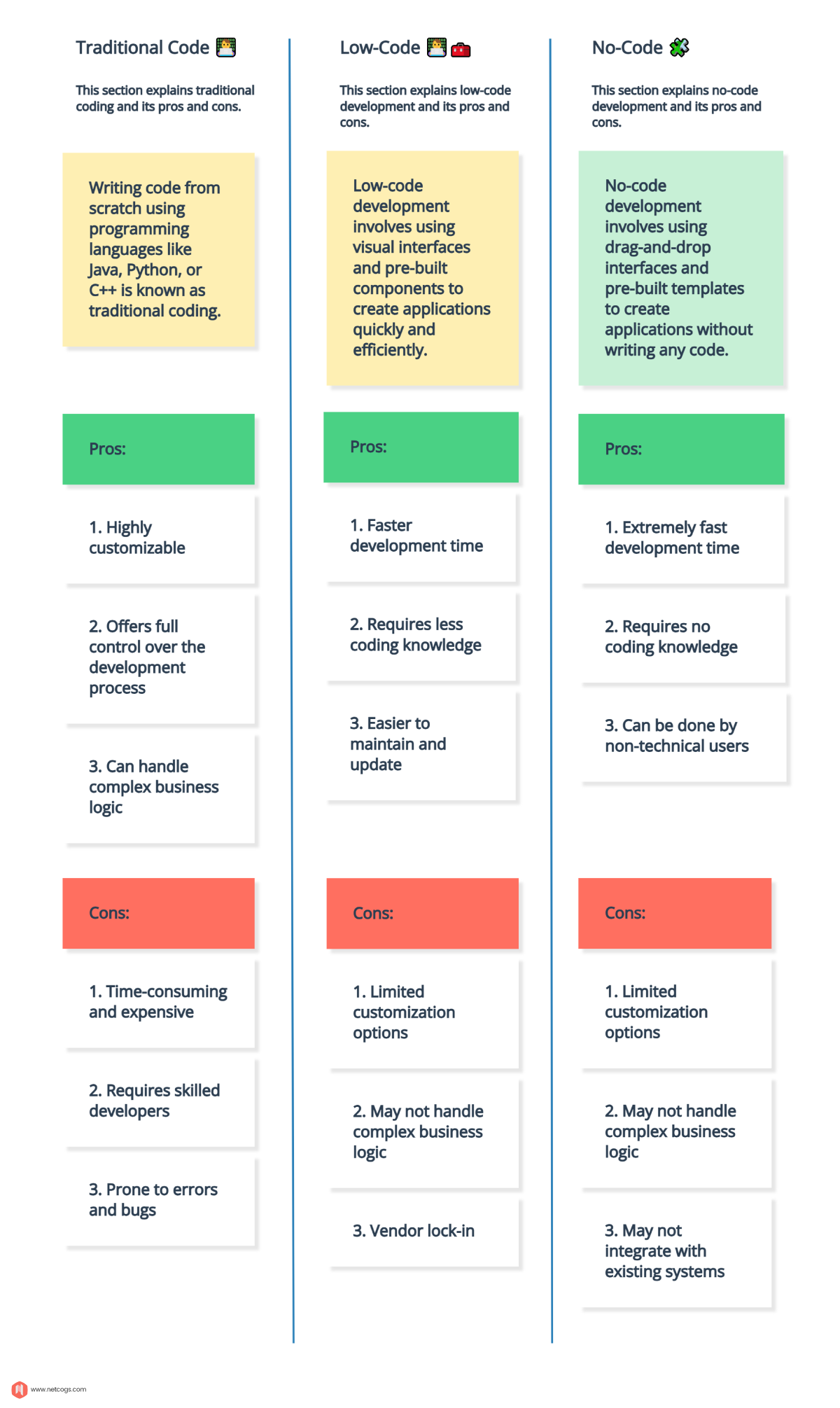Software development is a rapidly evolving field that offers various approaches and methods for creating applications. Among these, three of the most popular and widely used are traditional code, low-code, and no-code programming (Which is the hottest and trending topic these days among startups). Depending on the type, complexity, and purpose of the application each of these programming approaches has its own advantages and disadvantages. In this article, we will compare and contrast these three programming approaches, and explore their pros and cons, as well as their future trends and implications. By the end of this article, you will have a better understanding of which programming approach is best suited for your project, and how to leverage it effectively.
Ok, so let’s start with the more conventional approach.
1. Traditional Coding
Traditional code programming is the method of creating software applications by writing code in a specific programming language, such as Java, Python, or C#. This method requires a high level of technical skill and knowledge, as well as a lot of time and effort to develop complex applications. The programmer uses tools like SDK, IDE, and code editors to build the application. A common example is an application built upon a selective STACK like MERN, MEAN, etc.
| Pros | Cons |
| It gives developers full control over the design, functionality, and performance of their applications. | It requires a lot of time and resources to learn new skills, tools, and technologies. |
| It allows developers to create custom solutions that meet specific requirements and standards. | It can be difficult to keep up with the rapid changes and innovations in the software industry. |
| It enables developers to leverage the power and flexibility of various programming languages and frameworks. | It can be challenging to collaborate with other developers who have different coding styles and preferences. |
| It provides a solid foundation for learning other aspects of software development, such as testing, debugging, deployment, and maintenance. | It can be hard to find qualified developers who have the expertise and experience in coding. |
2. Low-Code Programming
Low-code programming is an approach to software development that uses tools and platforms that reduce the amount of code required to create a similar software application. Low-code platforms provide a graphical user interface (GUI) that allows users to visually create applications without writing complex code. They also include a library of pre-built components that can be used to build an application quickly. Some examples of low-code platforms are WordPress, Webflow, Builder.io, OutSystems, Glide, Draftbit, Zapier Interfaces, Bildr and FlutterFlow.
| Pros | Cons |
| It makes it easier for non-technical users or business users to create applications without needing any coding knowledge or experience. | It may limit the creativity or innovation potential of developers who want more control or customization over their applications. |
| It enables faster development and iteration cycles by allowing users to quickly make changes and updates without rewriting code. | It may compromise the quality or security standards of applications if they rely on third-party components or services that may not be reliable or trustworthy. |
| It integrates easily with existing systems and data sources by using connectors or APIs. | It may require additional training or support for users who want to learn how to use the platform effectively or troubleshoot issues. |
| It offers more flexibility and customization options by allowing users to modify or extend the functionality of their applications. |
3. No-Code “Programming”
No-code programming is an approach to software development that does not require any coding at all. No-code platforms provide tools that allow users to create applications by using drag-and-drop features, templates, menus, navigation bars, etc. They also provide pre-built components that can be used to quickly build an application without writing any code. Some examples of no-code platforms are WeWeb, Bubble.io, Framer, Softr, etc.
| Pros | Cons |
| It eliminates the need for any coding skills or knowledge for anyone who wants to create an application. | It may restrict the functionality or performance capabilities of applications if they depend on limited features or components provided by the platform. |
| It simplifies the development process by allowing users to focus on designing their user interface rather than writing their logic. | It may increase the dependency on external services or providers that may charge fees or impose limitations on using their platform. |
| It empowers non-technical users or business users who want to create their own solutions without relying on IT departments or developers. | It may pose security risks if users do not follow best practices for protecting their data or privacy when using third-party components or services. |
| It lowers the cost and time required for developing applications by reducing errors, bugs, and maintenance issues. |
Choosing the right programming approach for your project
That’s a great question! it can be a challenging decision, as each one has its own advantages and disadvantages. Here are some factors that you may want to consider when comparing traditional code, low-code, and no-code development:

Complexity: Traditional code development is best suited for complex applications that require high levels of customization and functionality. Low-code and no-code development are more suitable for medium-complexity applications that can be built quickly and easily with minimal coding.
Time: This factor refers to the amount of time required to develop and deploy an application. Traditional code development can take longer, as it involves writing a lot of code from scratch, testing, debugging, and deploying. Low-code and no-code development can reduce the time, as they use ready-made tools, templates, and components that can be quickly assembled and launched.
Cost: No doubt when it comes to costing, the Traditional approach initially costs more in building a solution as it will require industry standard methodology and team distribution along with additional licensee purchase costs. Low-code and no-code development can lower your cost by reducing the need for hiring developers or paying for expensive tools and software, But initially what looks like a fraction of the cost to initiate and build a project on low-code and no-code platforms will exponentially grow with per/user based costing model, and if we consider a vendor-lock it would be very difficult and costly to migrate and integrate your application on later stages in these platforms.
Quality: This factor refers to the level of functionality, performance, reliability, and security of an application. Traditional code development can ensure quality, as it gives full control over the design, functionality, and performance of the application. Low-code and no-code development can compromise the quality, as they rely on third-party components or services that may not be reliable or trustworthy.
Agility: This refers to the ability of an application to adapt to changing user needs and expectations. Low-code and no-code development can make the application more agile, as they allow quick changes and updates without rewriting code. Traditional code development can make the application less agile, as it requires more time and effort to update or modify the code
Scalability: Traditional code development can offer high scalability, as it gives you full control over the design, functionality, and performance of your application. You can optimize your code, choose the most suitable programming languages, and techniques like Microservices architecture, CI-CD (Continuous integration and continuous deployment), leverage cloud computing and other technologies like Dockerization, and Kubernetes to scale and manage your application. However, low-code development can also limit your scalability, as it depends on the features and capabilities of the low-code platform that you use. You may face challenges in integrating your application with existing systems or data sources, or in ensuring the reliability and security of your application. No-code development can nearly restrict your scalability, as it relies on the platform features, resource allocation, and strict components provided by the no-code platform that you use, you focus on your user interface rather than your logic.
Conclusion:
Before you start building your app, think about what you want to achieve and how you want to test it. If you have a new idea and you want to see if it works and if people like it, you can use no-code platforms to create a simple version of your app without coding. You can then get feedback from users and see if your idea has potential.
If you have validated your idea but you are not ready to invest a lot of time and money, you can use hybrid platforms that combine no-code and low-code features. You can find someone who can help you code some parts of your app and make it more advanced, while you keep growing your user base. Remember to always separate your app’s design and data layers, so that you can easily scale your app later when it becomes bigger and better.
When you have a successful app and you want to raise more funds and impress investors, you can hire a professional team and use a dedicated stack to code your app from scratch. That’s why it’s important to choose a platform that lets you switch and scale your app easily, without being locked in by the platform provider. Many platforms in the market offer this flexibility and let you change your app’s approach when you are ready to scale.
Have an idea! let’s connect then…


